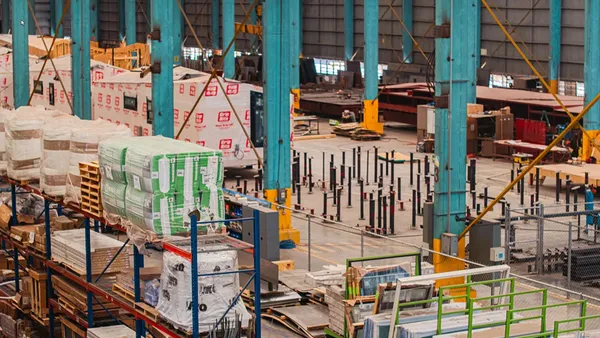Dive Brief:
- A New York City construction worker was killed this week after a stone slab reportedly struck him in the head as he was repairing the facade of a 14-story residential building in Manhattan, The New York Times reported.
- The New York Daily News identified the worker as 51-year-old Nelson Salinas, who died at a local hospital after emergency crews rescued him from a scaffold suspended 7 stories above the ground. Salinas worked for Vlad Restoration, which had been hired to rehab the building’s brick facade. Salinas’ manager told the Daily News that the coping stone fell, bounced off the hoist motor and then hit Salinas.
- Fire department officials told The Times that the stone had been removed so that the scaffold system could be installed, but the Daily News reported that scaffolding apparatus meant to secure the system knocked the stone loose. The New York City Department of Buildings is investigating the incident.
Dive Insight:
OSHA has requirements for the assembly of all types of scaffolding, including suspended systems like the one reportedly used by Vlad. As a general rule, suspended scaffolding systems are supposed to be anchored only to stable building components capable of supporting four times the maximum intended load.
There was no indication whether Salinas was wearing a hardhat or other head protection or where exactly on the head the stone hit him, so it's not yet known if a lack of personal protective equipment played a role in his death.
Struck-by incidents like this are among the leading causes of construction industry deaths. As one of the “Fatal Four,” along with falls, electrocutions and caught-in/between accidents, they account for more than 8% of jobsite fatalities. Being hit by a vehicle, by a falling or flying object or in the course of building a masonry wall are the three most common ways workers are exposed to struck-by accidents.
Typically, workers are more at risk from falling objects when they are working under scaffolding rather than on top of it. To minimize that danger, aside from wearing a hardhat, OSHA suggests the use of safety features like debris nets and the careful placement of material and tools so that they do not pose a danger to those below.
Construction vehicles and heavy equipment like backhoes also pose a danger to workers. For instance, there have been four deaths so far on the $2.3 billion I-4 Ultimate expansion project in Orlando, Florida, and all of them were caused by a struck-by accident.
In an effort to avoid these incidents, OSHA suggests several safety precautions, including not driving in reverse if the view is obstructed and making sure that heavy equipment is clear of personnel before using dumping or lifting features.














